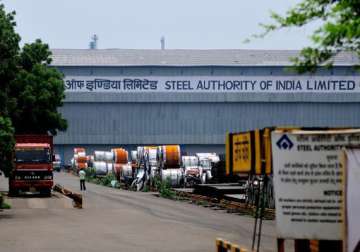New Delhi: Steel Authority of India (SAIL) has adopted a four-pronged cost optimisation strategy aimed at saving Rs 5,000 crore in next three years as it battles the dual challenge of high production cost and lower realisation.
The cost-saving initiatives, including input optimisation and reduction of overhead costs, were decided upon at a brainstorming session at Ranchi in which company Chairman C S Verma and all functional directors, CEOs of five steel plants were present.
“During the confluence, a special initiative named COIS (Cost Optimisation Initiatives of SAIL) was launched outlining the road map for achieving an overall saving target of around Rs 5,000 crore during the next three years,” SAIL said in a statement today.
Under this special initiative, SAIL has identified thrust areas — input optimisation, improving operational efficiency, quick stabilisation of newly-commissioned units and reduction of overhead costs and enhancing employee productivity — to cut costs.
“For each of the areas, the integrated steel plants and units have identified potential cost drivers and elaborated their strategy for cost optimisation,” the statement said.
During the two-day deliberation, Verma highlighted the current challenges the company is facing due to prevailing market conditions and intense competition.
“He urged the participants to think out of the box and walk the extra mile to enhance competitiveness of the company. He advised the senior officials to lead from the front for achieving the company's goals,” it said.
Mainly due to subdued consumption, Indian steel makers are battling rising production cost and lower sales realisation.
India's steel consumption grew by just 0.3 per cent in first five months of the current fiscal, according to data compiled by Joint Plant Committee, a unit under the Steel Ministry.
The production cost for steel is being driven up by the volatility in coal prices, higher railway freight, power tariff and royalty on minerals.
Depreciation of rupee against the US dollar is also causing pain.
However, prices remained flat due to prevailing market conditions leading to severe pressure on margins.
Latest Business News
